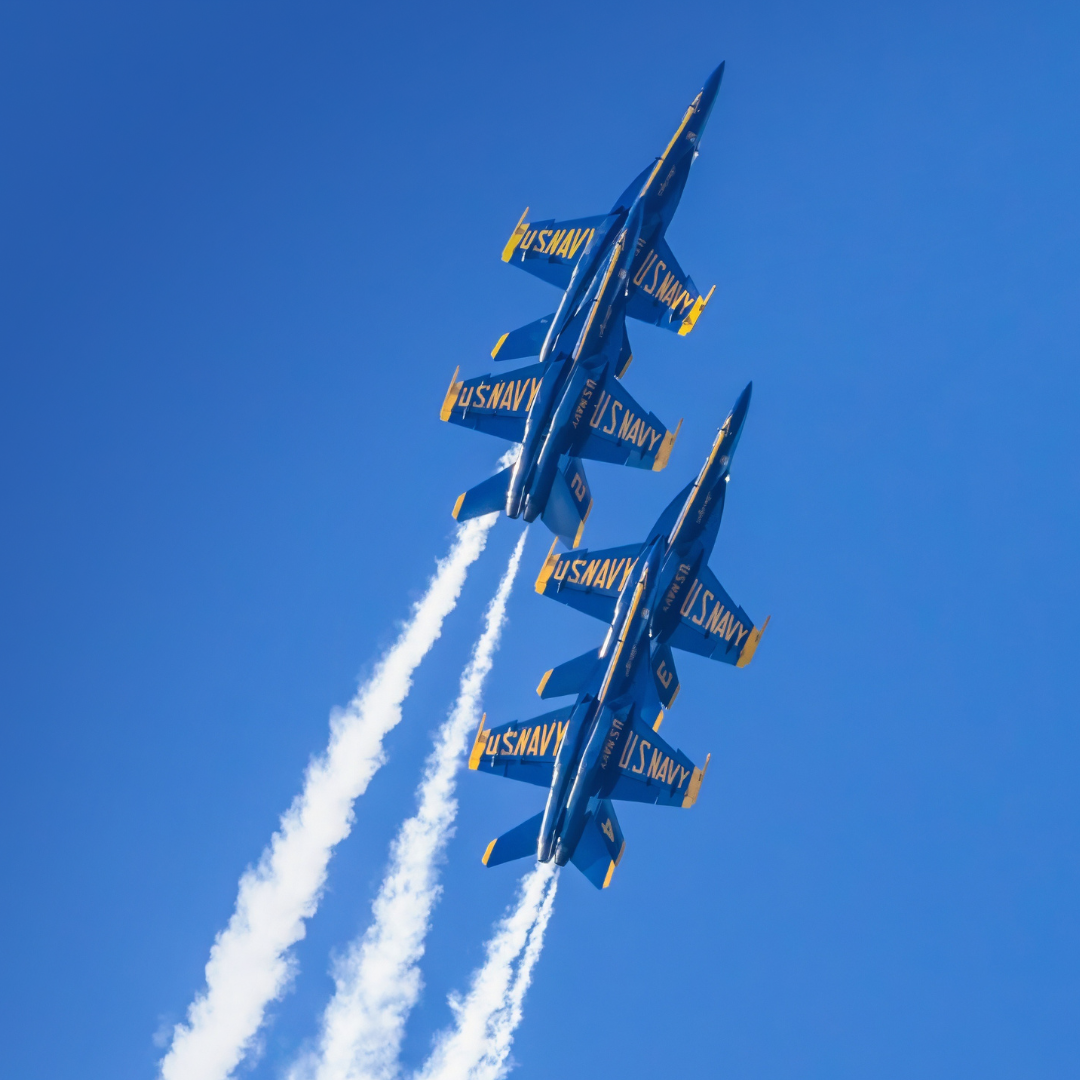CMMARS Revealed: Master the Bid, Secure the Win Now

The Contracted Maintenance, Modification, Aircrew, and Related Services (CMMARS) contract represents a major opportunity for companies specializing in aviation maintenance and support. With a solicitation expected in February 2025 and an award projected for March 2026, this IDIQ contract will have a 5-year base period plus five 1-year options and will play a critical role in sustaining naval aviation readiness—both for U.S. Government and Foreign Military Sales (FMS).
For bid and proposal professionals, winning CMMARS requires a deep understanding of the scope, technical requirements, and evaluation criteria that will shape the competition. This blog provides insights into contract structure, NAICS requirements, evaluation factors, and key risks to help bidders develop a strategic, high-scoring proposal.
CMMARS Requirements Summary
CMMARS focuses on maintenance, modification, inspection, and repair of the following diverse aviation assets:
- Fixed-Wing Aircraft: Traditional aircraft used for transport and combat.
- Rotary-Wing Aircraft: Helicopters vital for rescue, transport, and combat support.
- Unmanned Systems: Used for surveillance, reconnaissance, target acquisition, and combat missions.
- Airships and Lighter-Than-Air (LTA) Vehicles: These encompass aircraft that rely on buoyancy for flights.
- Aircraft Components and Subsystems: The various parts and assemblies that make up an aircraft, each contributing to its overall functionality, safety, and performance. These components and subsystems can be broadly categorized as follows:
- Airframe: The structural framework of the aircraft, including the fuselage, wings, and tail assembly. It provides shape and support for the entire aircraft.
- Propulsion System: Includes engines (jet, turboprop, or piston) and associated components such as propellers, fuel systems, and exhaust systems, which provide thrust to propel the aircraft.
- Avionics: Electronic systems used for communication, navigation, monitoring, and control of the aircraft. This includes radios, GPS, radar, and flight management systems.
- Landing Gear: Comprises wheels, struts, brakes, and associated mechanisms that allow the aircraft to take off, land, and taxi on the ground.
- Control Systems: Includes flight control surfaces (such as ailerons, elevators, and rudders) and associated mechanisms that allow pilots to control the aircraft’s altitude and direction.
- Hydraulic and Pneumatic Systems: Systems that use fluid or air pressure to operate various aircraft functions, such as landing gear extension/retraction and flight control actuation.
- Electrical Systems: These systems provide power to the aircraft’s electrical components and systems, including lighting, avionics, and auxiliary systems.
- Fuel Systems: Manages the storage, distribution, and delivery of fuel to the engines, ensuring efficient and safe operation.
- Environmental Control Systems: Maintains cabin temperature, pressure, and air quality, ensuring a comfortable environment for passengers and crew.
- Safety and Emergency Systems: Includes fire detection and suppression systems, emergency lighting, oxygen systems, and evacuation equipment.
- Weapons and Engineering Services: Meeting modern warfare demands.
- Aircrew Services: Skilled personnel for system operation and management.
- Support Equipment and Aviation-Related Systems: Tools and systems for operations and maintenance.
CMMARS NAICS Requirements
| NAICS | Type of Work Covered |
| 488190 | Other support activities for air transportation: aircraft ferrying services, aircraft inspection services, aircraft maintenance and repair services (except factory conversion, factory overhaul, factory rebuilding), aircraft testing services, fueling aircraft on a contract or fee basis, independent pilot, air (except owner-operators) inspection services, aircraft testing services |
| 336411 | Aircraft manufacturing: manufacturing or assembling complete aircraft; developing and making aircraft prototypes; aircraft conversion (i.e., major modifications to systems); and complete aircraft overhaul and rebuilding (i.e., periodic restoration of aircraft to approved design specifications) |
| 336412 | Aircraft engine and engine parts manufacturing: aircraft engine repair/overhaul, aircraft engine rebuilding |
| 336413 | Other aircraft parts and auxiliary equipment manufacturing: aircraft propeller repair/overhaul and aircraft landing gear repair/overhaul |
Projected Awards for Various Platforms
| Platform/System | Service | Program Office (PMA) | Project Award Year |
| C-12 | CLS | PMA 207 | 2027 |
| E-6 | CLS | PMA 271 | 2027 |
| T-34/6 | CLS | PMA 273 | 2027 |
| TH-57/73 | CLS | PMA 273 | 2028 |
| H-60 | CLS | PMA 299 | 2028 |
| NTWL | CLS | NAWC | 2029 |
| NTWP | CLS | NAWC | 2029 |
| UC-35 | CLS | PMA 207 | 2029 |
| METS | CLS | PMA 273 | 2029 |
| AIMD | CLS | PMA 273 | 2029 |
| T-45 | CLS | PMA 273 | 2029 |
| C-26 | CLS | PMA 207 | 2030 |
| H-60 | CLS | PMA 299 | 2030 |
Geographic Scope and Complexity
This contract covers multiple locations across the globe. Prospective locations for CMMARS follow-on services may include, but are not limited to, the following locations:
- Patuxent River, MD
- Whiting Field, FL
- Pensacola, FL
- Key West, FL
- Meridian, MS
- Corpus Christi, TX
- Kingsville, TX
- Fort Worth, TX
- Fallon, NV
- China Lake, CA
- Point Mugu, CA
- San Diego, CA
- Miramar, CA
- Lemoore, CA
- Yuma, AZ
- El Centro, CA
- Jacksonville, FL
- K-Bay, HI
- Andrews AFB, MD
- Cherry Point, NC
- Manassas, VA
- Norfolk, VA
- Belle Chase, LA
- Guantanamo Bay, Cuba
- Atsugi, Japan
- Iwakuni, Japan
- Misawa, Japan
- Futenma, Japan
- Bahrain
- Qatar
- Jubail, Saudi Arabia
- Oceana, VA
- Hickam AFB, HI
Requirements
Using the previous solicitation as a reference, bidders were evaluated for compliance with the requirements identified in the elements listed below:
Contract Reference
Bidders were required to complete a Contract Reference template provided by the government. Contracts included:
- Contracts of all types, except indefinite-delivery (ID) contracts.
- Orders under a basic ordering agreement (BOA).
- Delivery orders (DOs) or task orders (TOs) under single or multiple award ID contracts.
- Aggregated DOs/TOs under single or multiple award ID contracts.
In addition, the Contract Reference:
- Had to be performed as a prime on a U.S. Government contract.
- Had to be at the same physical location and have the same CAGE Code identified in the award form.
- Had to have an annualized dollar value of contracts greater or equal to $10M for each Contract Reference.
Aircraft Maintenance Experience
Aircraft Maintenance Requirements for the contract information required that the bidder has performed Organizational and/or Intermediate and/or Depot Maintenance for at least one of the following:
- Four or more types/models simultaneously.
- Equivalent to 25,000 or more annual flight hours.
- Three or more main operating bases.
- At least 40 aircraft simultaneously.
- Depot maintenance of aircraft where the entire aircraft platform is inducted.
Management Experience
Bidders were required to submit a comprehensive narrative supported by substantiation documentation. The documentation had to demonstrate the Offeror’s experience managing and performing aircraft maintenance tasks that ensured aircraft were “Safe for Flight/Ready for Issue” and met scheduled availability for the contracts listed in the bidder’s Contract Summary. The substantiation documentation had to explicitly assign management responsibility for fulfilling maintenance requirements to the Offeror. For instance:
The contract should mandate the Offeror have the following responsibilities:
- Planning: Outline how contract requirements will be satisfied.
- Controlling: Implement standards to fulfill contract obligations.
- Organizing and Staffing: Ensure qualified personnel are employed to meet contract terms.
Artifacts that may substantiate management responsibility include:
- A fully executed contract with a Statement of Work.
- Explicit scope within the contract reference.
- Logs and records.
- Monthly maintenance plans/reports.
- Letters of designation, assignment, certification, or appointment.
- Equivalent documentation where the Offeror is identified as the responsible party, such as the Program Manager (as defined in COMNAVAIRFORINST 4790.2 series) for maintenance programs.
These technical elements were evaluated as:
- Acceptable: Proposal meets the requirements of the solicitation.
- Unacceptable: Proposal does not meet the requirements of the solicitation.
The technical evaluation criteria may seem straightforward—delivering information in a government-provided template—but it’s a little more complicated. The supporting documentation must substantiate all claims and be easily identifiable to the evaluator.
Small Business Utilization
A Small Business Utilization Plan was required to show the Offeror’s approach to identifying small business concerns, the process for determining the extent of small business participation, and any process improvements that could be realized by using small business.
Risks and Challenges
The CMMARS program presents several risks that must be carefully managed to ensure successful execution. Some of the risks to be considered include:
Technical Risks:
- Complexity of Services. The technical complexity of maintaining and modifying diverse aviation platforms can lead to challenges in meeting performance standards and timelines.
- Geographical Disbursement. Managing operations across multiple sites requires sophisticated coordination and close attention to contract compliance.
Political and Geopolitical Risks:
- Policy Changes. Changes in government policy or leadership can impact program priorities and funding.
- Geopolitical Tensions. International relations can affect foreign military sales and collaboration on joint projects.
Supply Chain Risks:
- Component Availability. Delays in the supply of critical components and parts can impact maintenance schedules and operational readiness.
- Vendor Reliability. Dependence on single vendors for parts and services increases the risk of supply chain disruptions.
Financial Risks:
- Funding Constraints. Changes in government budgets or funding priorities can impact the availability of resources for the program.
Operational Risks:
- Readiness and Availability. Delays in maintenance and modification work can affect the operational readiness and availability of aviation assets.
- Quality Assurance. Ensuring consistent quality across all services is critical; any lapses can lead to safety issues or operational failures.
Compliance and Regulatory Risks:
- Adherence to Standards. Ensuring compliance with all relevant aviation standards and regulations is essential to avoid legal and operational repercussions.
- Environmental and Safety Regulations. Compliance with environmental and safety regulations must be maintained, which can add complexity to operations.
Performance Risks:
- Contractor Performance. Variability in contractor performance can lead to inconsistency in service delivery, affecting overall program success.
- Performance Metrics. Establishing and monitoring appropriate performance metrics is essential to ensure that service delivery meets contractual obligations.
Security Risks:
- Data Security. Protecting sensitive data related to military aviation systems is critical to prevent unauthorized access and potential security breaches.
Keys to Developing a Strong Proposal
Bidders should focus on:
- Choosing contract references that are aligned with the requirements.
- Validating the period of performance, NAICS codes, funding amount, government points of contact, and other required contract information. Just one mistake will make a bidder noncompliant.
- Gathering the information used to substantiate your contract claims. If you want to claim credit for maintaining four or more models simultaneously, you’ll need documentation that calls out each model. The substantiation must be readily apparent to the evaluator.
Implementing a contract review process to ensure compliance.
Conclusion
The CMMARS procurement offers a vital opportunity to boost the readiness and capabilities of Navy aviation assets. By partnering with industry, the program seeks to efficiently manage maintenance, modification, and support for various aviation platforms. Despite challenges like technical complexities and geographical spread, effective risk management and a focus on quality can ensure success. Lohfeld Consulting is tracking this opportunity and will provide tips for a winning proposal. If you want to learn more about how our aviation experts can help, please fill out our contact form today.
Relevant Content:
By Brenda Crist, Vice President at Lohfeld Consulting Group, MPA, CPP APMP Fellow
Lohfeld Consulting Group has proven results specializing in helping companies create winning captures and proposals. As the premier capture and proposal services consulting firm focused exclusively on government markets, we provide expert assistance to government contractors in Capture Planning and Strategy, Proposal Management and Writing, Capture and Proposal Process and Infrastructure, and Training. In the last 3 years, we’ve supported over 550 proposals winning more than $170B for our clients—including the Top 10 government contractors. Lohfeld Consulting Group is your “go-to” capture and proposal source! Start winning by contacting us at www.lohfeldconsulting.com and join us on LinkedIn, Facebook, and YouTube(TM).
Paperback or Kindle
10 steps to creating high-scoring proposals
by Bob Lohfeld
contributors Edited by Beth Wingate
Subscribe to our free ebrief
Teaming friends, frenemies, and enemies—12 tips to mitigate harmful effects
Did you know that contracting officers spend up to 20% of their time mitigating disputes between teaming partners? In an informal poll we conducted on LinkedIn last month, 40% of respondents classified their teaming partners as “frenemies” on their last bid.
Explore Further
- Advice (539)
- AI (28)
- APMP (18)
- Army MAPS Contracts (3)
- Business Development (294)
- Capture Management (266)
- Complex Technology Grants Services (26)
- Favorite Books (5)
- GenAI (4)
- Go-to-Market (27)
- Graphics (5)
- Lohfeld Books (2)
- NASA SEWP VI Contracts (2)
- Navy SeaPort-NxG Contracts (2)
- NIST MSE Grants (1)
- NIST NAPMP Grants (2)
- Past Performance (63)
- Post-submission Phase (14)
- Pre-RFP Preparation (264)
- Proposal Management (339)
- Proposal Production (75)
- Proposal Reviews (38)
- Proposal Writing (107)
- Pursuit Phase (108)
- Research Report (4)
- Resources (63)
- Tools & Tips (421)
- Training (13)
- Uncategorized (223)

Sign Up for INSIGHTS and Download your FREE book
We'd love to help you with your proposals. Enjoy our complimentary Lohfeld Consulting Group Capture & Proposal Insights & Tips book with your FREE subscription to our Insights Newsletter.
GET YOUR FREE BOOK



